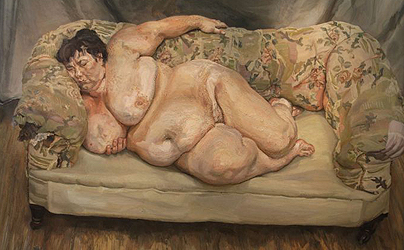Big question! First, a little philosophical throat-clearing: I don’t believe that modern/contemporary art is as radical a break with the past as it likes to think. I had an art professor in college argue that, really, all abstract art is representational, and all representational art is abstract. Any abstract art has to refer to particular sensory impressions that the artist has had, because there’s nothing else we have to draw on for material. No matter how crazy the art is, we can’t help but look for signs of the physical world in it. Meanwhile, even the most photorealist painting is still abstract. You’d never be fooled by a painting into thinking you were looking out a window. Ultimately, it’s just static blobs of color on a flat surface; you have to do quite a bit of interpretive work to be “convinced” by the illusion.
High modernism may have been a break with academic practice in western Europe and America at the end of the 19th century. But symbolized, abstracted images of the body are as old as humanity. Among the very oldest known human artifacts are fertility figurines that abstract the female form as radically as Brancusi. There are forty thousand year old cave paintings that represent people and animals in a way not noticeably different from Picasso. The European and American modernists didn’t so much invent anything new as rediscover ancient methods of representing the body less literally. Every world culture has its own symbolic and stylized ways to represent the body; to refer to “art” as “the stuff in museums in the industrialized world” is to miss most of what’s going on out there.
There are two big forces that have changed our view of the human form in the past half-century: biology and computer simulation. When my parents were born, the structure of DNA was hypothesized, but not yet known. Our knowledge of our bodies’ workings extend all the way down to the molecular level, and while that knowledge is still partial, it grows constantly and quickly. At this point, there is no reason whatsoever to believe that humans are profoundly different from any other large mammal, or that any supernatural or magical explanation is necessary to explain why we are how we are and how we got this way.

We know that the only difference between living and non-living things is in the way the energy flows and the molecules combine. We know that the brain is just another organ like the pancreas or liver, more complex in its physical structure maybe, but not possessed of any separate magical essence. We know that the cells in “our” bodies are outnumbered ten to one by symbiotic and parasitic microbes. And we know that the world is vastly larger and vastly older than our ancestors could have conceived.
I’ve noticed that my interest in art in the galleries has fallen off precipitously as I spend more time studying biology. Just to understand the mundane activities of your cells takes enormous visualization and imaginative skills. I find that an hour in the Museum of Natural History or an aquarium has more aesthetic excitement than everything in the Met and the MoMA put together. I follow scientific illustration and astronomy Tumblrs that make the art blogs seem tediously shallow and irrelevant. The artists who I really admire are the ones who, rather than climbing ever deeper into their own navels, try to engage with all of the new and counterintuitive knowledge inundating us, try to organize it into forms that are intelligible to our senses, that can make emotional sense out of the uncaring world we live in.
Computers have been the other big change for representations of the body. Video game avatars are much like the animist religions’ views of nature spirits — they’re called “sprites” for a reason. The relationship between game characters and nature spirits is most clear in Japanese games, where animism is still very much alive. The mushrooms and turtles in Super Mario Bros come straight out of Shinto folklore. Ascribing humanoid attributes and motivations to computer processes is a remarkably strange thing to do, when you think about it. Even my computer science professor unconsciously personifies algorithms when she explains them to us.
We represent ourselves on the screen as mouse pointers, as pixelated plumbers, as all kinds of fantastical monsters and aliens, even as a rectangular blinking cursor. A segment of the nerd population yearns for the day when we can just upload our consciousness onto the internet and leave the meatbags behind once and for all. I doubt they’ll get their wish, but there’s no doubt that the computer is intertwining itself with our minds and bodies more deeply. What this means for our representations of ourselves to ourselves remains to be seen, but it’s going to be something major.





Comments are closed.